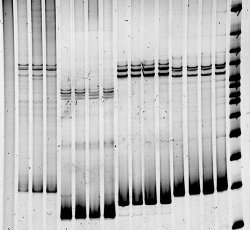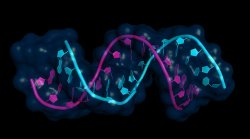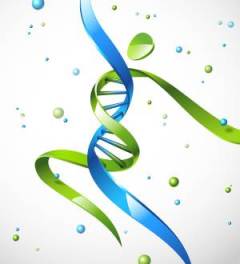Authors
This area of investigations is developing by a number of scientists, among them are A. D. de Grey, J. Vijg, R. Holliday et al.
History:
The history of epigenetic researches is linked with studies of evolution and development. For a long time, many scientists did not acknowledged epigenetics at all or even intentionally passed it over in silence.

That occurred mainly due to the fact that knowledge about the nature of epigenetic signals and ways of their realization in the organism was very indistinct. Actually, epigenetics in modern interpretation was developing and promoting by scientists of our country — I.
Example:
Enzygotic twins are known to be clones, i.e. exact genetic copies of each other. In the early childhood, their chromosomes have nearly the same patterns of DNA methylation in the same tissues. Nevertheless, when such twins grow old, they have sharply different patterns of DNA methylation in spite of the genetic identity and the same age.
Description:
Though chromosomes are regularly damaging and the effectiveness of the repair mechanisms declines with age, mutations occur quite rare and slowly accumulate with age.

But the frequency of cancer and other
 When we age, global demethylation of genome takes place, and that activates genes that must normally be «silent». Demethylation is provoked by chromosome damages,
When we age, global demethylation of genome takes place, and that activates genes that must normally be «silent». Demethylation is provoked by chromosome damages,
 Additions and Criticism:
Additions and Criticism:
Life style (including the type of diet) and environment influence substantially the probability of demethylation. For example, deficiency in uptake of vitamins (folic acid, B12) and microelements (zinc, selenium) in old age is one of the reasons of demethylation.
It is not clear as yet why
Publications:
- de Grey, Aubrey DNJ. «Protagonistic pleiotropy: why cancer may be the only pathogenic effect of accumulating nuclear mutations and epimutations in aging." Mechanisms of ageing and development 128.7 (2007): 456–459.
- Vijg, Jan. «The role of DNA damage and repair in aging: new approaches to an old problem." Mechanisms of ageing and development 129.7 (2008): 498–502.
-
Gravina, Silvia, and Jan Vijg. «Epigenetic factors in aging and longevity." Pflügers
Archiv-European Journal of Physiology 459.2 (2010): 247–258. - Holliday, Robin. «Perspectives in aging and epigenetics." Epigenetics of Aging. Springer New York, 2010. 447–455.